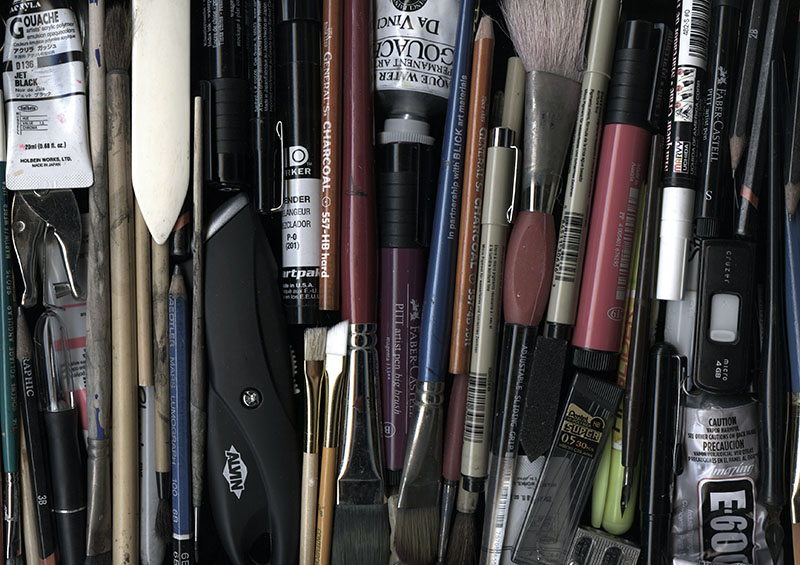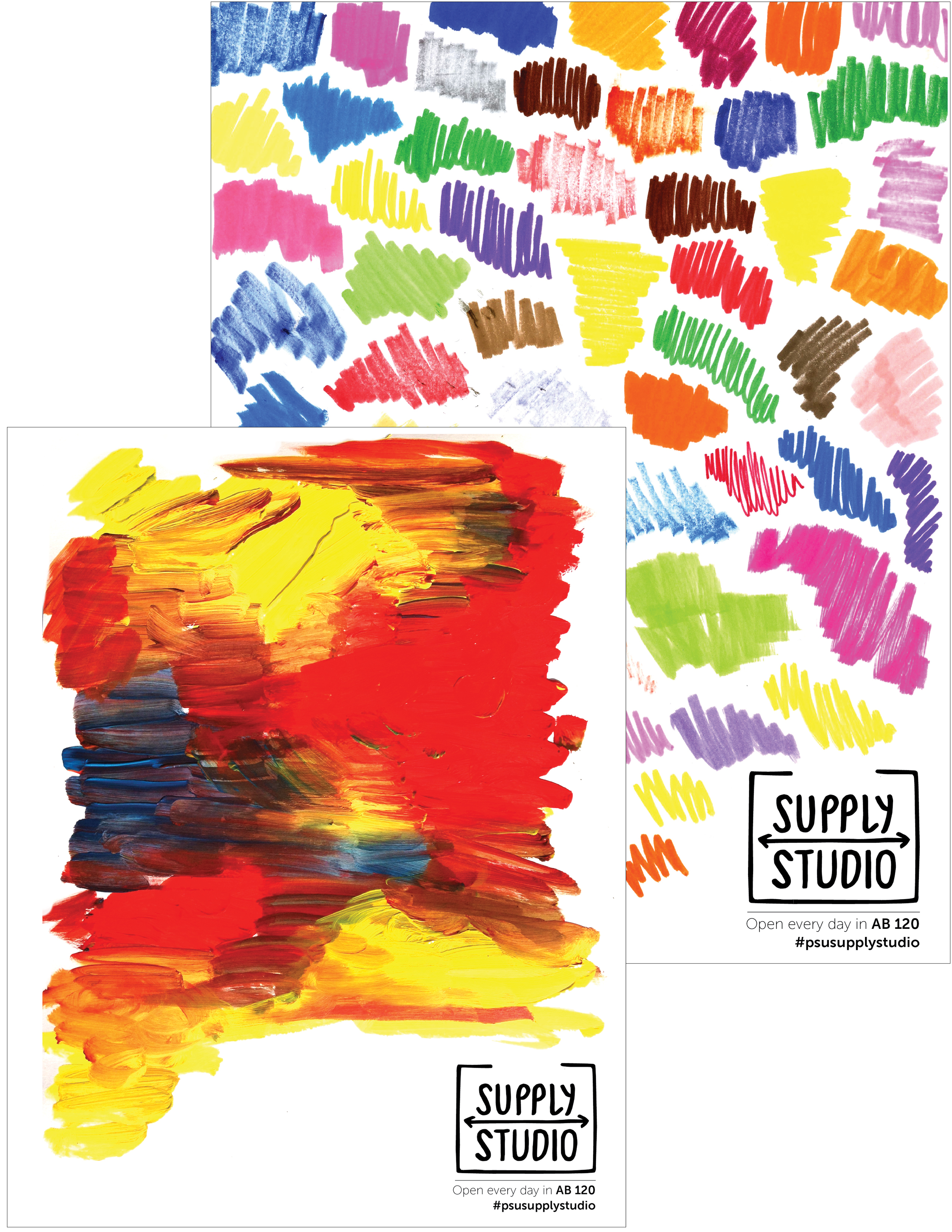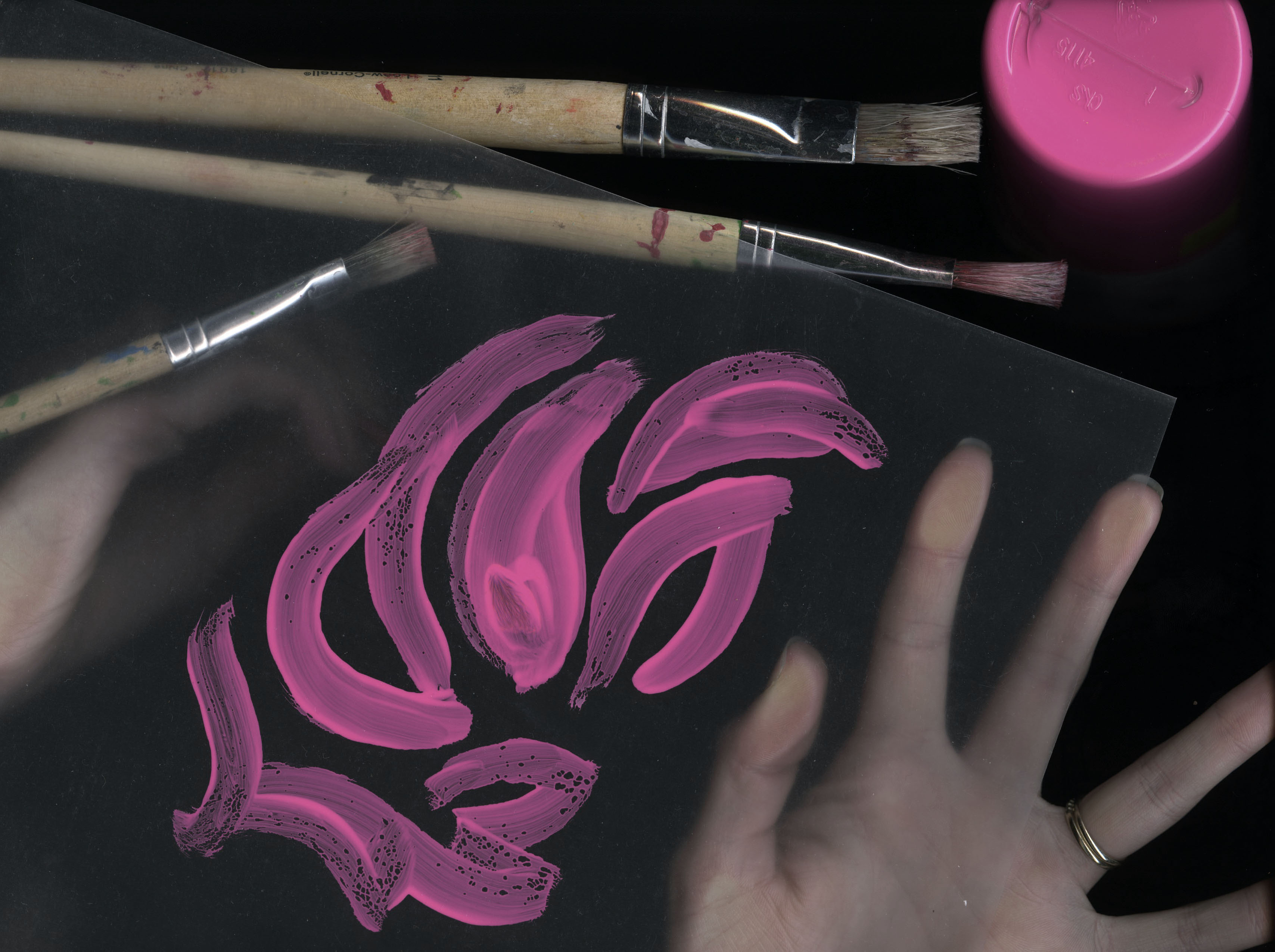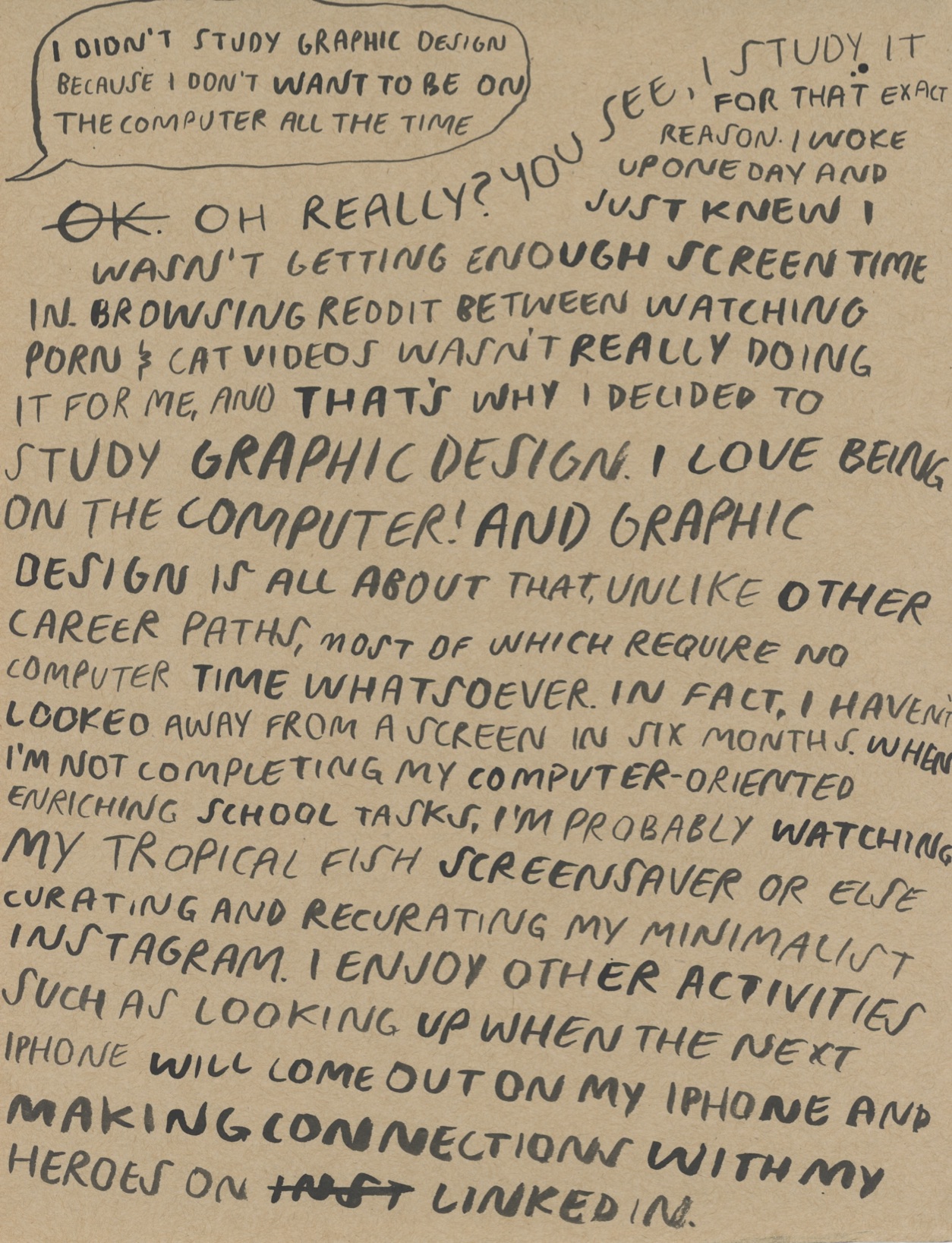
Our generation has gotten way too obsessed with our computers. It seems that we rely on them for nearly every step of the design process. But what if, as graphic designers, we tried to use the computer as little as possible? John Cleese said, “We don’t know where we get our ideas from. What we do know is that we do not get them from our laptops.”

Without a doubt, graphic designers should be skilled technicians, being able to swiftly navigate their way around a computer (obviously). I am always super intimidated by the kids that are wizards with their computers. When I first started design classes, I felt I would never be a good designer because I couldn’t ever get my vector shapes in Adobe Illustrator to look perfect. They were always wonky and jagged. I felt if I had to use a computer for everything, then my dreams for making great design would never come true. Sure, I could have practiced more or started watching YouTube videos, or signed up for lynda.com, but I never felt inclined to do so. For me, it became more fun to use my hands. Besides, I barely even liked being on the computer anyway. I simply wasn’t interested in learning every single technical operation within the endless computer software that graphic designers need to use (which by the way, needs to be updated, like, yesterday).
If you’re anything like me, you can use this disinterest in computers to your advantage. When people digitally render things to “look a certain way,” I often wonder—why not just make it real? If you want to make it look like it was written on a chalkboard, you should be using a real chalkboard! If you want it to look like it has mud smeared all over it, smear mud all over it! If you want it to look like a floral patterned fabric, better head to the fabric store! Thinking of other ways to make something will give you a portfolio of work that is interesting and varied. A good example of this is a project done by my awesome designer friend Nina Berry:

LEFT
Series of DIY posters made for PSU's Supply Studio. Posters were printed blank and then customized using various materials, which suited the project perfectly and allowed the branding to be flexible and changeable.
Austin Kleon writes about using analog forms over digital forms in his book Show Your Work:
The computer is really good for editing your ideas, and it’s really good for getting your ideas ready for publishing out into the world, but it’s not really good for generating ideas…For my first book, Newspaper Blackout, I tried to make the process as hands-on as possible. Every poem in that book was made with a newspaper article and a permanent marker. The process engaged most of my senses: the feel of newsprint in my hands, the sight of words disappearing under my lines, the faint squeak of the marker tip, the smell of the marker fumes—there was a kind of magic happening. When I was making the poems, it didn’t feel like work. It felt like play.

You may or may not need to give your work a break from the computer. You don’t always have to use one to be a good designer, you know.
A Graphic Designer’s toolbox:
Sponges, toilet paper rolls, necklaces, beads, leaves, forks, spoons, thumbtacks, paint samples, crepe paper, bolts, nuts and screws, trees, fabric, hay, chicken wire, tissue paper, rocks, glass jars, glue, saran wrap, tin foil, toothbrush, paint, stuffed animals, weird little figurines, food, beer bottles, household appliances, a rolling pin, mud, rhinestones, rope, feathers, stickers, pipe cleaners, streamers, balloons, sticks, windows, carpet, shoes, clothing, potted plants, a hammer, random pieces of string, outdoor garden decorations, folding chairs, old books, nail polish, makeup, pom poms, pizza, goodwill finds, mesh screens, wooden dowels, paper towels, gold leaf, highlighters, thread, notebook paper, etc., etc., etc.
An Interview with:
Nina Berry (2016 grad)
1.You tend to use a wide variety of media in your work. What kinds of materials and methods do you gravitate towards?
Hmm, I would say that recently I've mostly been interested in photography, research, and writing. I have been working on more conceptual, research driven projects for the most part that employ taking photos, or making some drawings. But not as much attention is being focused on the aesthetic side of things. I would also say I've been gravitating a lot toward vernacular design, or design that is created for strictly communicative purposes, like yard sale signs and amateur, low-tech advertisements.

2.How has your background in art and/or elsewhere influenced your approach to design work?
I would say it consistently pushes me away from wanting to do commercial work. Which is hard, because commercial projects tend to be the ones that pay. But yeah, it has encouraged me to think about all the spheres of design outside of the commercial/advertising realm and to be more interested in those.
3.What is your opinion on computer-based methods of graphic design? Do you think graphic design can exist without the computer?
I think that a lot of concepting and strategy can be done without the computer, because so much of that is talking to people and doing research. I mean, I think that it's okay to use the computer for lots of things design-related too. I use the computer to do research, and to write, and to edit page layout, and to look at Tumblr, and lots of other things. But I rarely look online for visual inspiration, and I don't write a lot of code or digitally illustrate, which seem like screen-intensive activities to me. I think graphic design used to exist without the computer. And after computers, or in a world with much less technological saturation, design will still exist. Because it always has.
4.What is your opinion on computer-based methods of graphic design? Do you think graphic design can exist without the computer?
Right now, I'm interviewing for a position with the Peace Corps doing environmental education in Panama. So, ideally, that. The other part of what I do is outdoor education, and that is the path I intend to pursue for awhile after I graduate. I think that eventually I will come back to design in some way, or another, and do I think my design education has taught me a lot of valuable skills that I can carry with me wherever I go; doing research, visually and verbally communicating what I want, and moving things around until they look right are a few that come to mind.